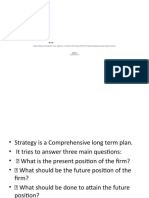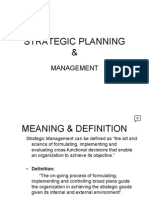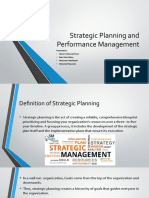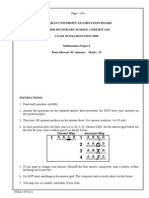0% found this document useful (0 votes)
17 views17 pagesCommerce Unit 1 Module 5
Strategic planning is crucial for organizations as it provides direction, competitive advantage, and fosters innovation while minimizing risks. The process involves identifying current positions, prioritizing objectives, developing actionable plans, implementing strategies, and reviewing outcomes. Effective strategic management and implementation are essential for achieving organizational goals and enhancing overall performance.
Uploaded by
neena thomasCopyright
© © All Rights Reserved
We take content rights seriously. If you suspect this is your content, claim it here.
Available Formats
Download as PDF, TXT or read online on Scribd
0% found this document useful (0 votes)
17 views17 pagesCommerce Unit 1 Module 5
Strategic planning is crucial for organizations as it provides direction, competitive advantage, and fosters innovation while minimizing risks. The process involves identifying current positions, prioritizing objectives, developing actionable plans, implementing strategies, and reviewing outcomes. Effective strategic management and implementation are essential for achieving organizational goals and enhancing overall performance.
Uploaded by
neena thomasCopyright
© © All Rights Reserved
We take content rights seriously. If you suspect this is your content, claim it here.
Available Formats
Download as PDF, TXT or read online on Scribd
/ 17



















































































